Polaroid Go review
-
-
Written by Gordon Laing
The Polaroid Go is the World’s smallest analogue instant camera and quite possibly the cutest camera I’ve ever used. Launched in April 2021 it costs $99 or 109 pounds for the camera alone and uses brand new Polaroid Go instant film that costs around $20 or pounds for a pack of 16 mini square photos, working out about a dollar or a pound 25 a print. In the video below I’ll show you the Polaroid Go in action, but if you prefer to read a written version, keep scrolling!
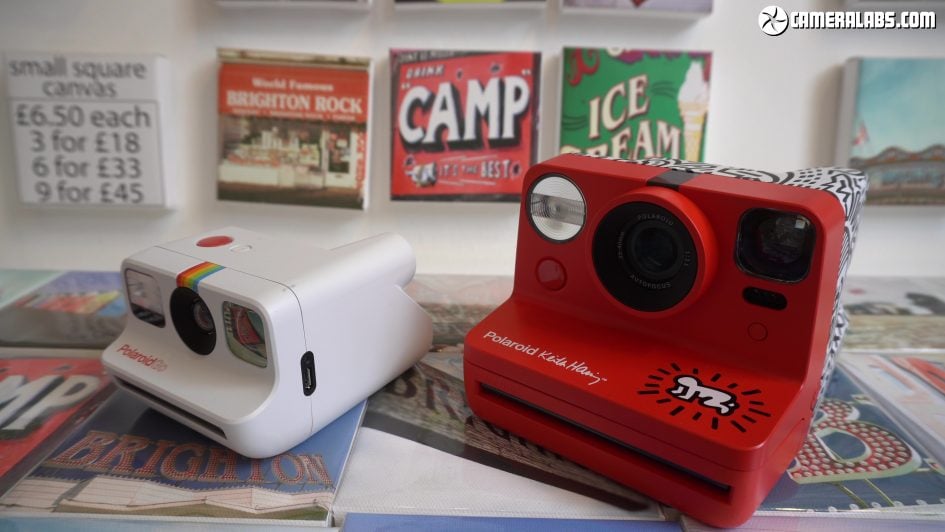
Above: The camera itself is essentially a shrunken version of the Polaroid Now, seen here on the right in its latest Keith Haring edition at Zoing Image in Brighton – check it out if you’re in town. I love what Polaroid is doing with design, whether paying homage to the rainbow stripes of the OneStep Land from the late Seventies that inspired the Instagram logo, or celebrating artists like Haring. These are cameras I really want in my collection.
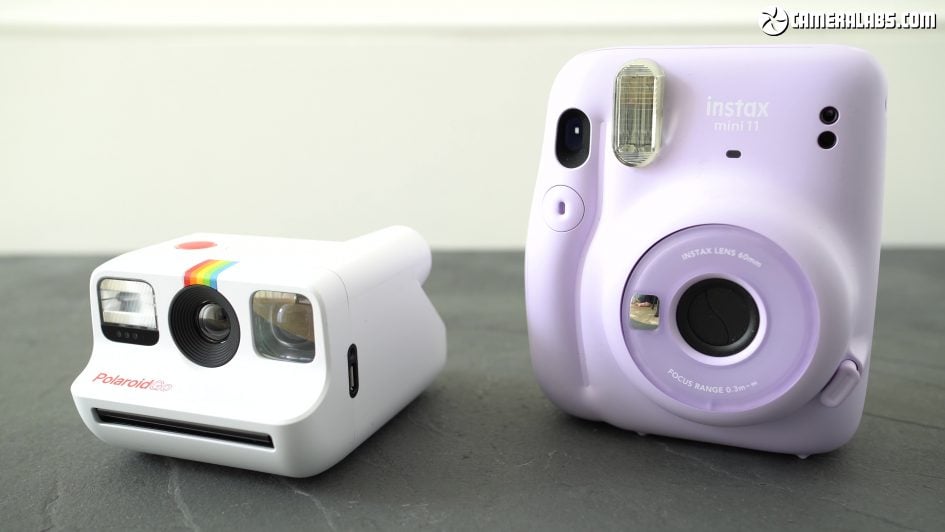
Above: There may be smaller instant cameras that employ digital sensors and tiny printers, but the Polaroid Go is the smallest to use a fully analogue process, basically a smaller version of the Polaroid Now. Viewed from the front it looks tiny compared to Fujifilm’s INSTAX Mini 11 on the right…
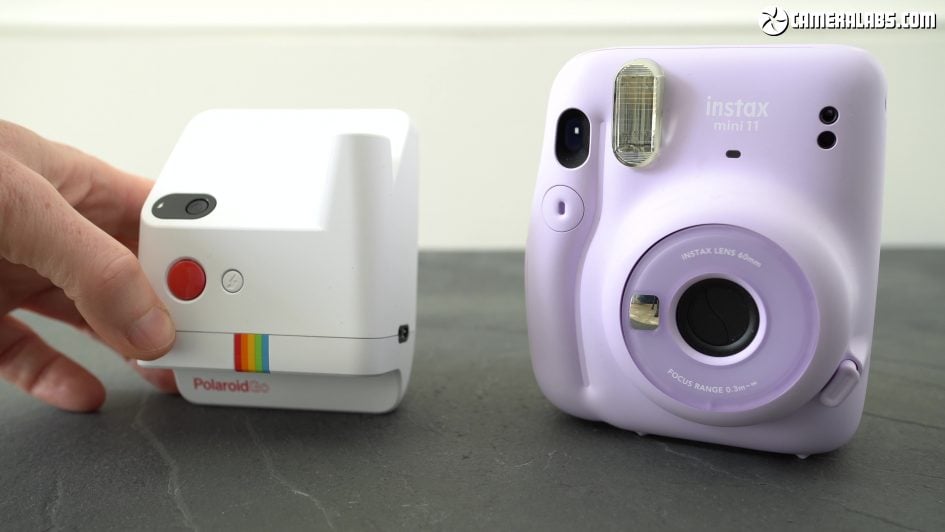
Above: …although the Polaroid is deeper and when you lie the Mini 11 next to it the difference isn’t so dramatic. But the Go remains smaller overall and I love the styling.
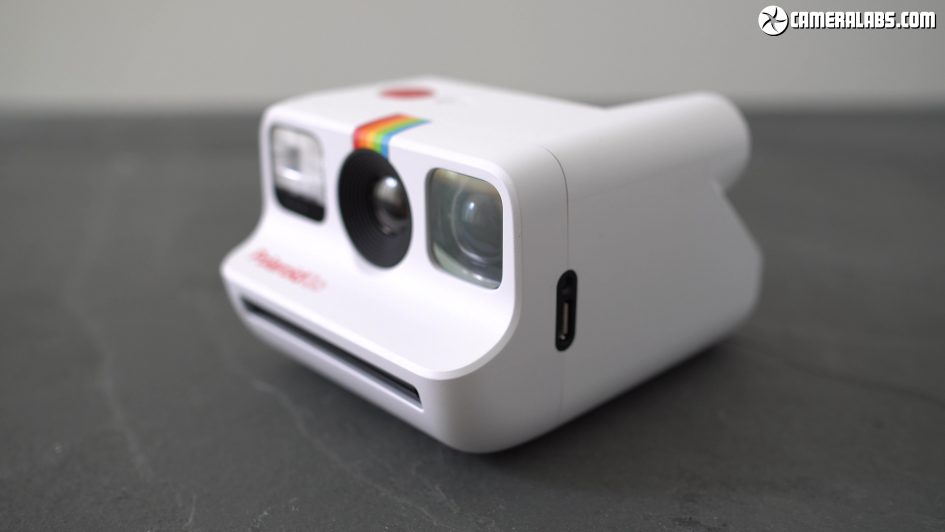
Above: Both models may be completely automatic with no override on exposure, but the Go is better-featured than the Mini 11 with a double exposure mode, the chance to disable the flash and a self timer too, albeit no tripod thread. There’s even a digital display on the back that tells you how many shots are remaining.
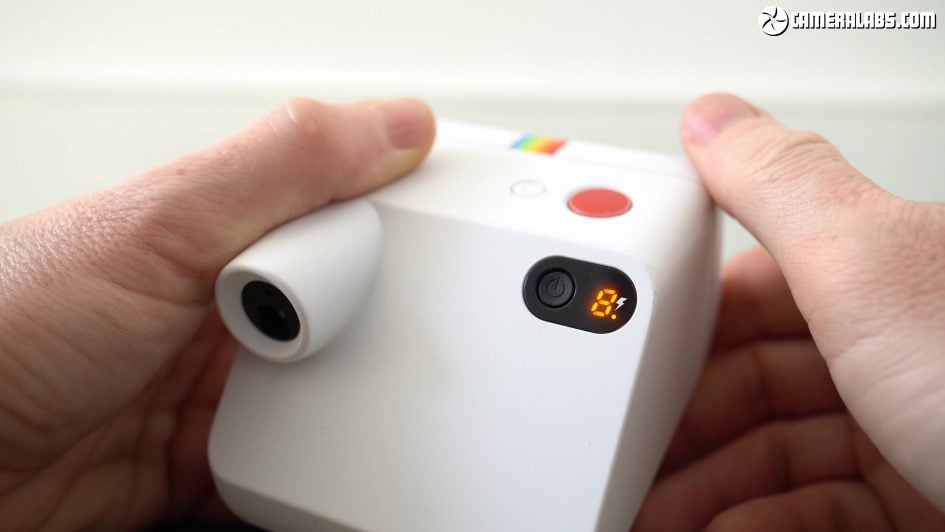
Above: Here I’ve loaded a new cartridge so the camera’s reporting eight photos, while the dot indicates the flash will fire. Pushing the flash button on the top toggles the flash off and on, although it will reset to on after each photo. Double-clicking the button activates the double exposure mode, while pushing and holding sets the self timer. Fujifilm reserves these kind of features for higher-end INSTAX bodies.
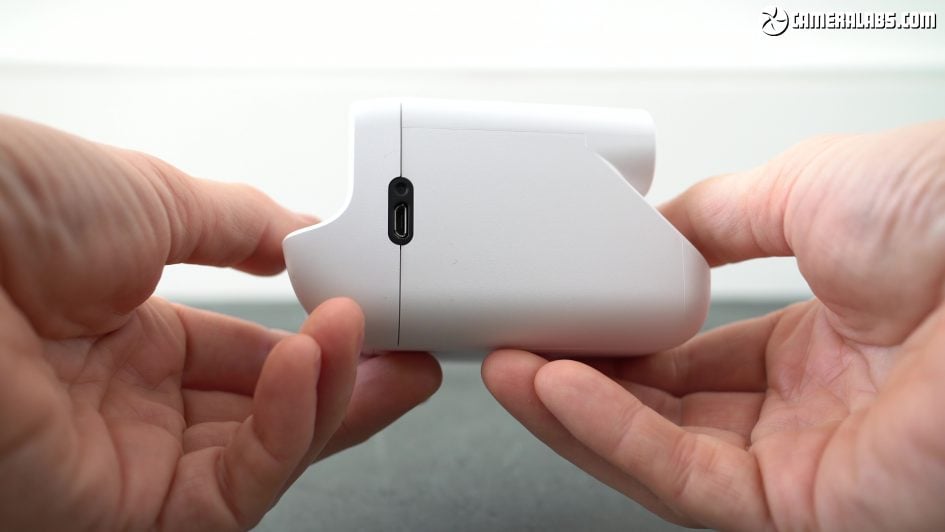
Above: In another step-up from the cheapest INSTAX cameras that are powered with AAs, Polaroid has equipped the Go with a built-in rechargeable battery, good for 15 packs of film and charged over a Micro USB port on the side.
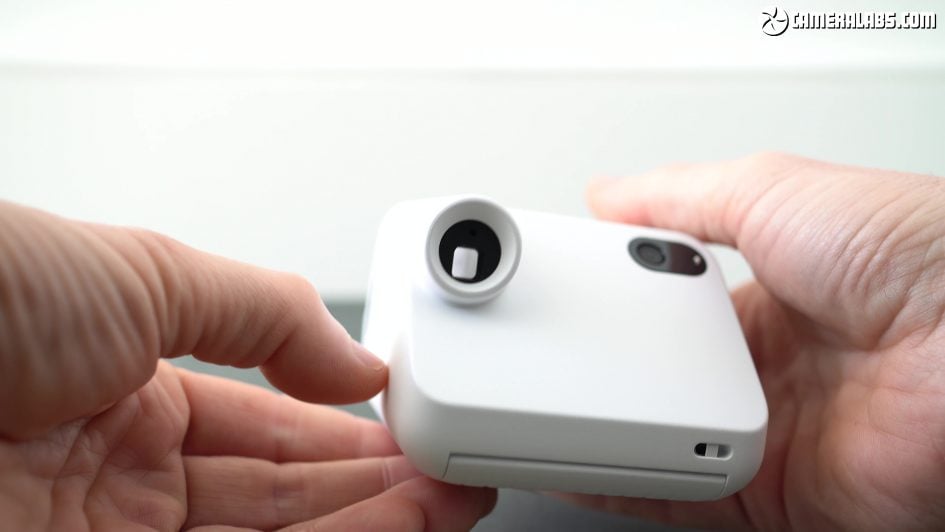
Above: Like other instant cameras you compose with an optical viewfinder at the back, and while there’s no markings for parallax, I found it reasonably accurate.
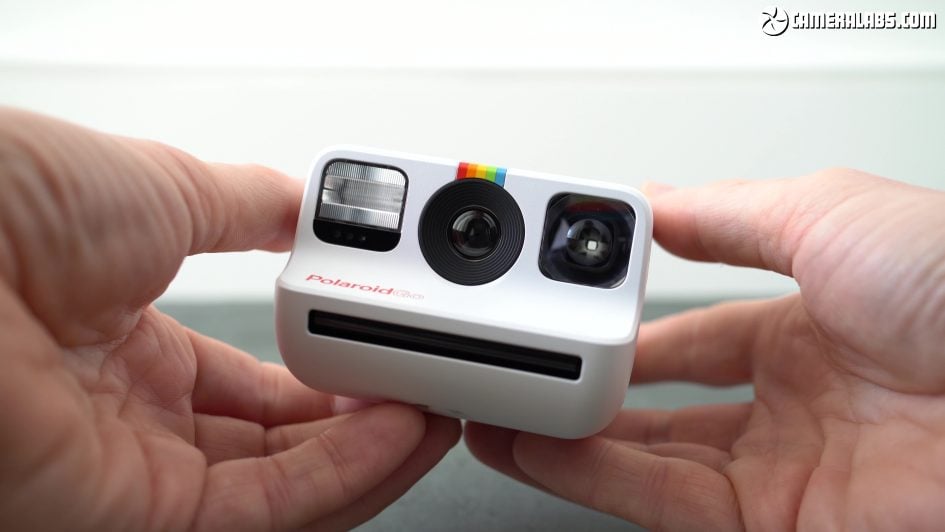
Above: Turn the camera around for selfies and you’ll see Polaroid has cunningly used a semi-reflective coating on the viewfinder, allowing it to double-up as a surprisingly large and effective selfie mirror.
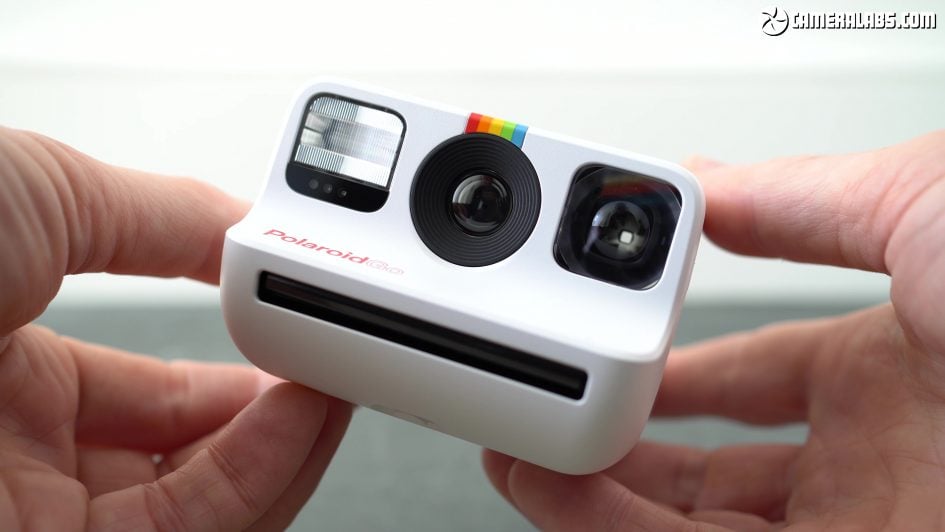
Above: Meanwhile in the middle is the lens, equivalent to 34mm for semi-wide shots with the camera automatically choosing from two apertures and a range of shutter speeds to adjust the exposure. Note unlike the Polaroid Now, the lens isn’t autofocus and there’s no separate macro mode either, so you’ll have to trust the depth of field is sufficient and not get too close.
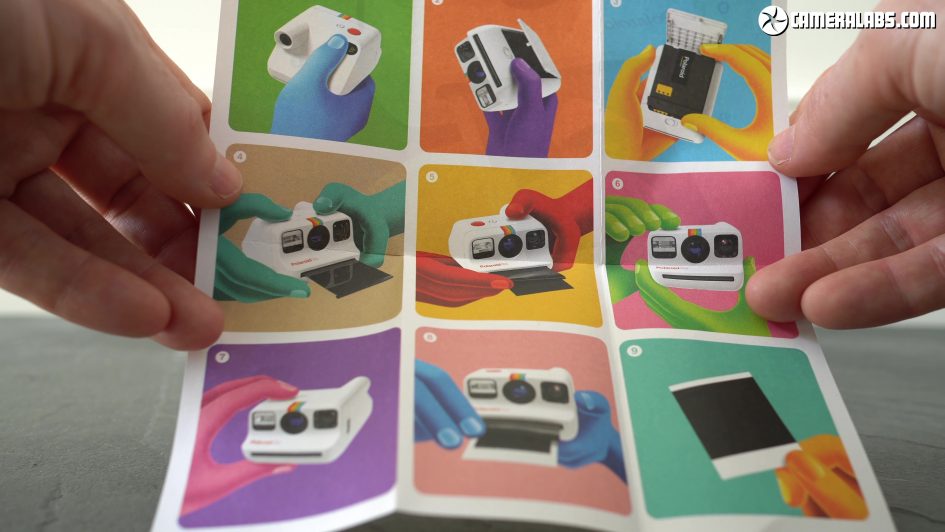
Above: Polaroid continues the cute theme by supplying the Go with a simple and colourful quick start guide and a gorgeous set of stickers which your family, if it’s anything like mine, will fight over.
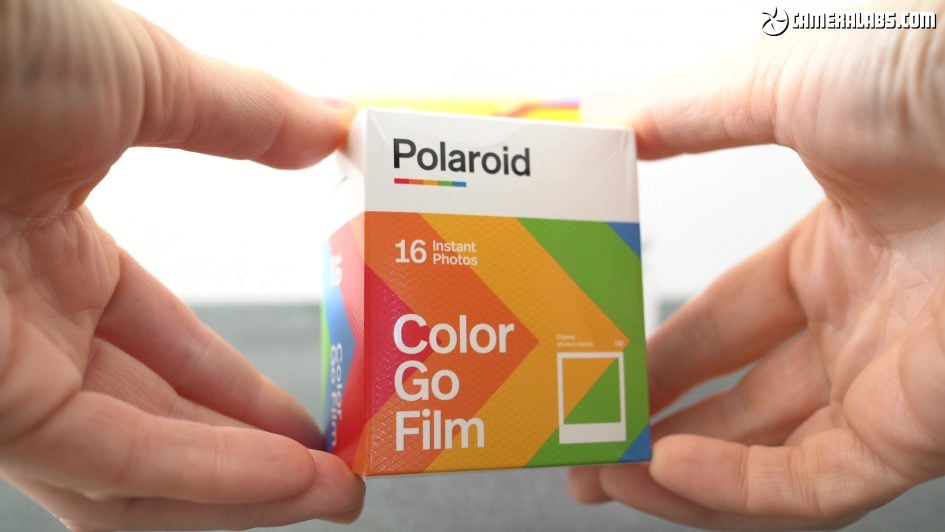
Above: Ok, now for the film which comes in cartridges containing eight prints, typically sold in twin packs. Like other modern instant systems, the paper contains the chemicals to develop the picture, so everything you need is in there.
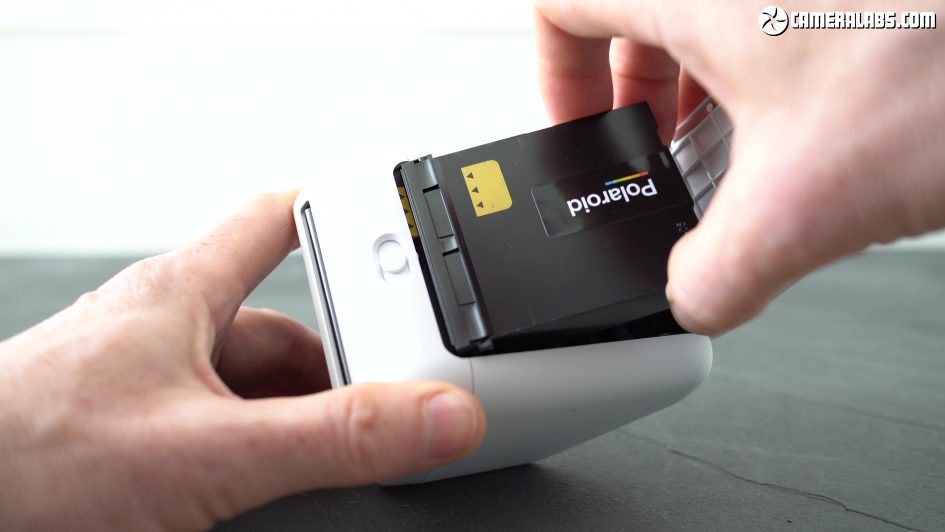
Above: Due to the size of the camera, the cartridges are loaded from the underside through a simple door reminiscent of INSTAX cameras. The first thing to emerge from the camera after loading a new film is the safety sheet that can be disposed of.
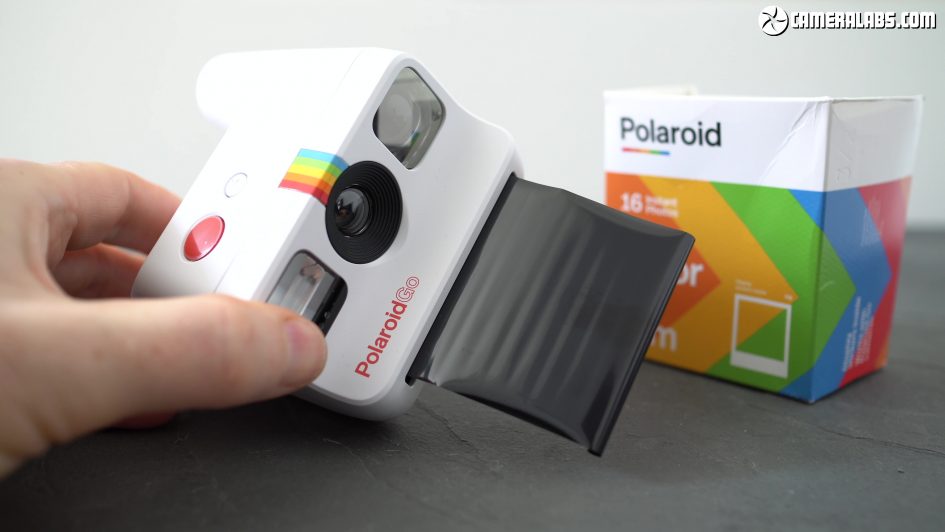
Above: Once you’re good to go, a firm push of the bright red shutter release button fires the camera with the paper emerging immediately afterwards, hidden behind a retractable blind to protect it from light. You should now wait for at least five seconds before flicking the blind away back into the camera.
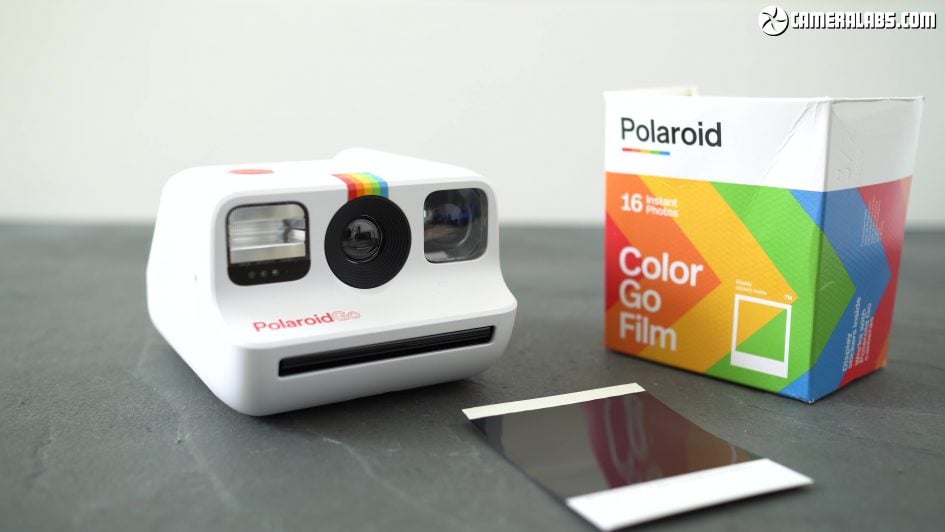
Above: At this point the print should be placed face-down or in a dark place for development to complete, which takes 10 to 15 minutes. I generally place them inside the empty film box in a bag to shield them from light or handling that can damage the development. During this time they’re not as quick or robust as INSTAX.
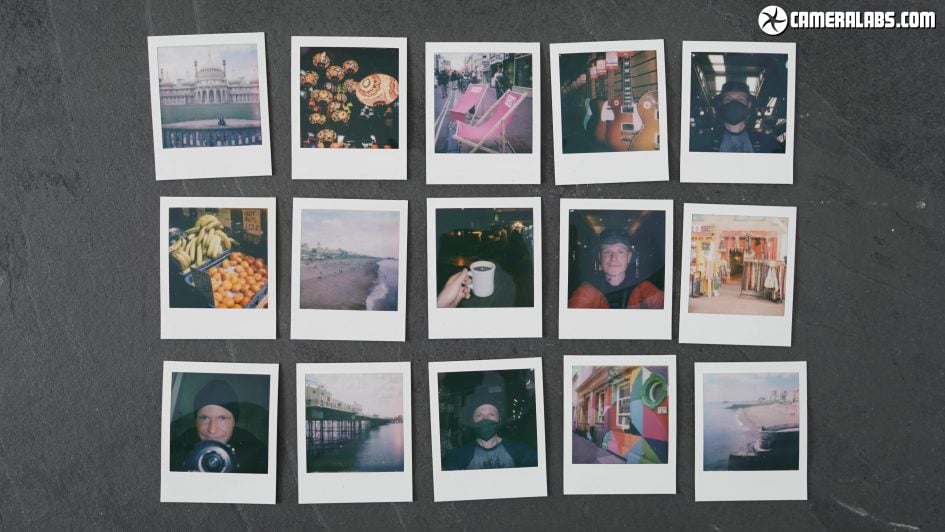
Above: Once developed you’ll see they share a similar muted style to vintage Polaroids, softer and less contrasty than Fujifilm’s INSTAX process, but attractive in a different way.
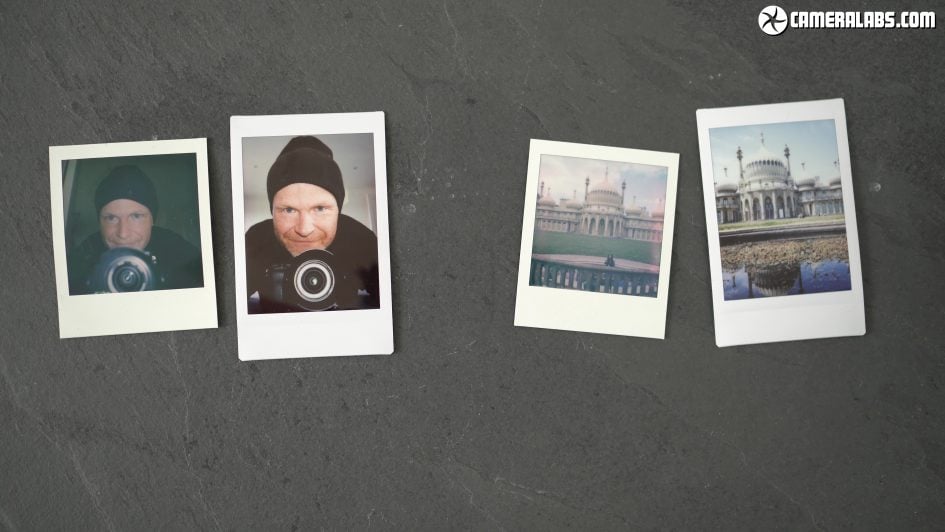
Above: At 2.1 inches wide they’re the smallest of the current instant formats, almost one quarter the size of I-type Polaroids and roughly the same width as an INSTAX Mini print, seen here on the right, but shorter with a square picture shape.
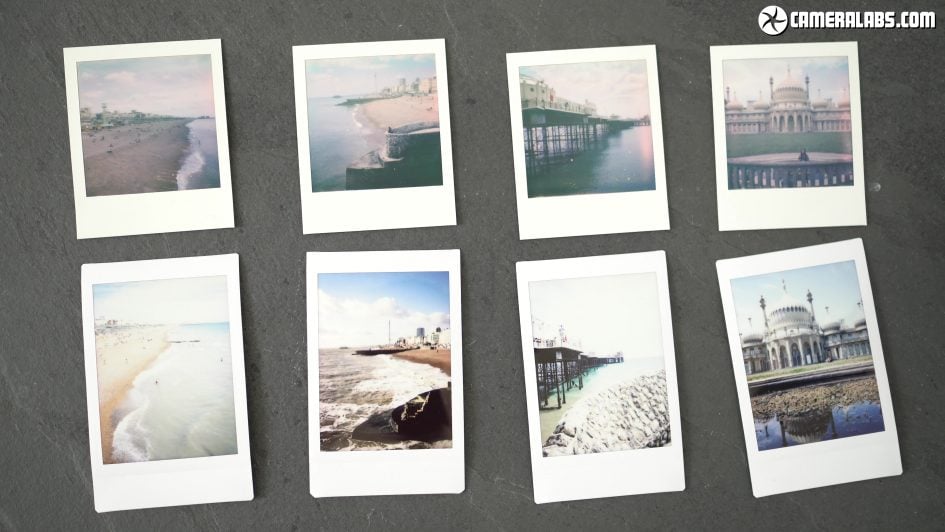
Above: Here’s a bunch of shots I took around Brighton with the Polaroid Go, starting with some outdoor landscapes on a Sunny day. There’s a slight magenta tone to them and what looks like some development issues due to my slightly rough handling of these first ones, but I actually like the way they’ve turned out. For comparison, here’s some previous shots I took with an INSTAX Mini showing their higher contrast but equally their inability to handle very bright conditions as well. I’m relieved to see the Polaroid not over-exposing under similar conditions.
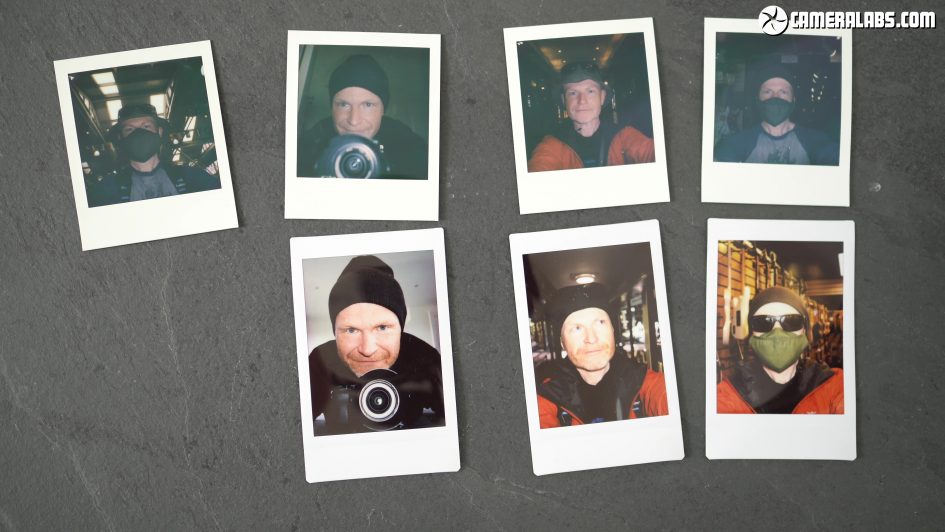
Above: Now for some selfies, all taken with a flash from arm’s length and here I felt they all looked a bit dim, but equally you might like this style. For comparison here’s a few INSTAX Mini shots taken under similar conditions where everything looks turned-up, brightness, contrast, detail. Which do you prefer though?
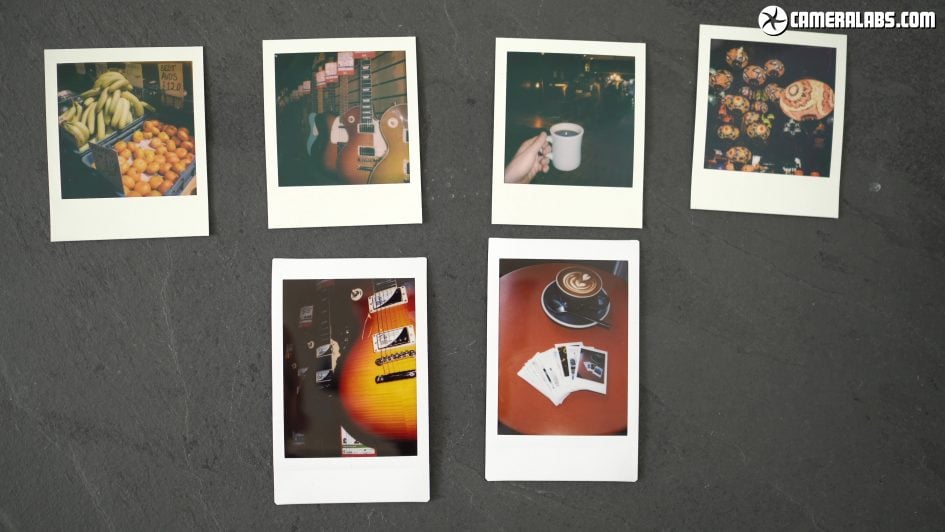
Above: While there’s no dedicated macro mode on the Go, you can still get reasonably close to your subjects. The coffee mug and guitars were taken with the flash and the fruit and lamps without, and as before here’s a couple of INSTAX Minis for comparison.
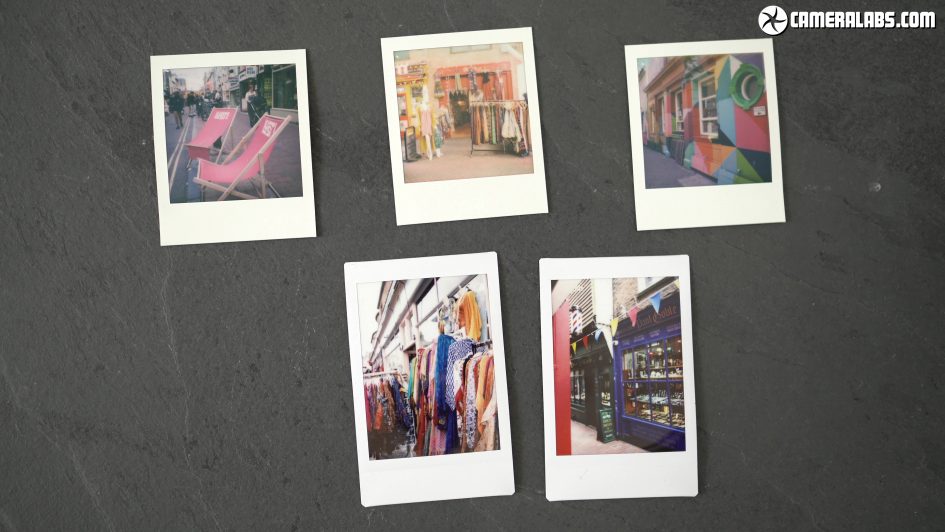
Above: Finally here’s some more outdoor shots with the Polaroid Go where I’ve tried hard to find some bright colours, and I think they’re my favourites. Sure they remain more muted than the INSTAX process, but there’s a very different style and quality to them that remains very appealing, and that after all is the joy of film and instant processes, that you’re getting a result that can look dramatically different to modern cameras and even digital filters.
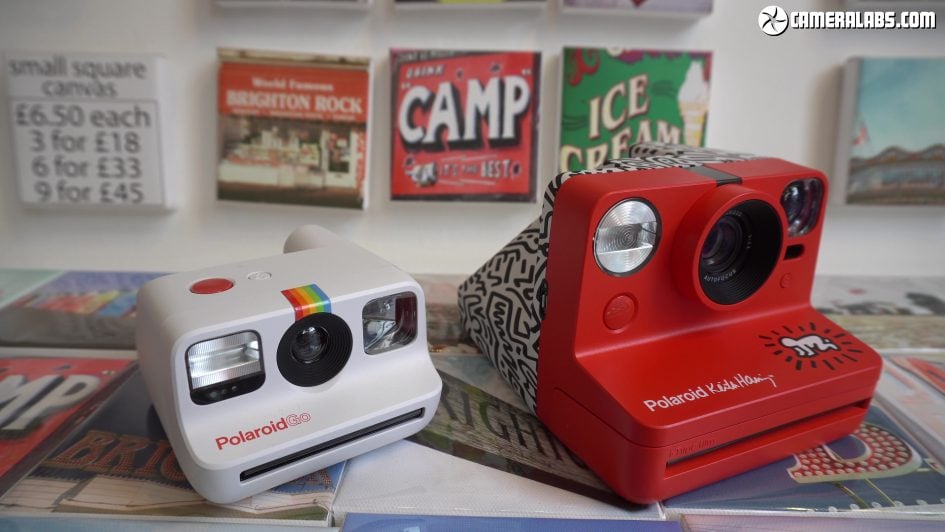
Above: While the Polaroid Go camera may cost roughly the same as a full-size Polaroid Now, there’s simply no denying the charm of this little device, and while the prints are obviously downsized, they’re also roughly half the price of I-type prints. INSTAX Mini is cheaper still, with cameras starting at around two thirds the price of the Polaroid Go and film costing around 70 cents or pence a shot. INSTAX Mini prints are also taller as well as being quicker and more robust at the development stage.
But the Polaroid Go is better featured than a Mini 9 or 11 and once you match its features in the INSTAX range the body price becomes similar. So while the Polaroid film remains more expensive, I feel the choice really boils down to which camera and process you prefer.
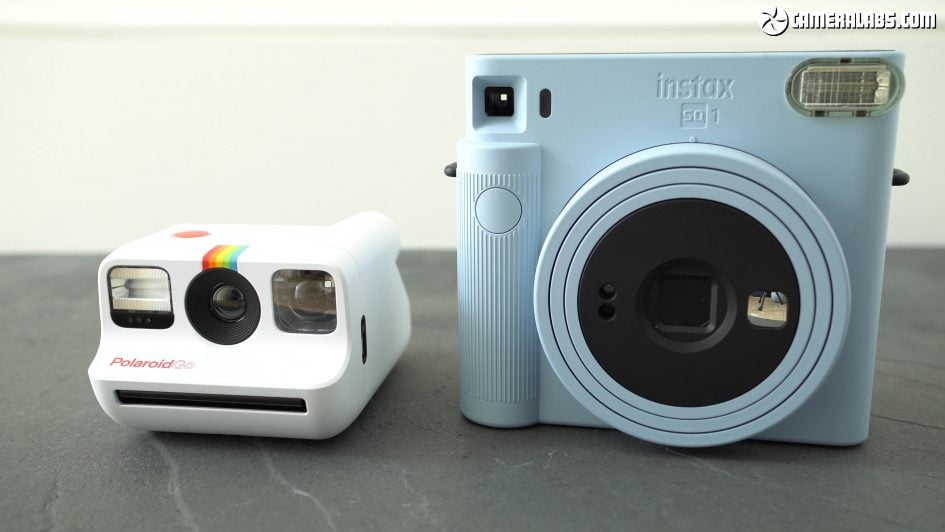
Above: A closer rival in price and print shape is Fujifilm’s larger INSTAX Square format, with the SQ1 camera costing roughly the same as the Go, and the prints working out a similar price too, sometimes even a little cheaper when bought in bulk.
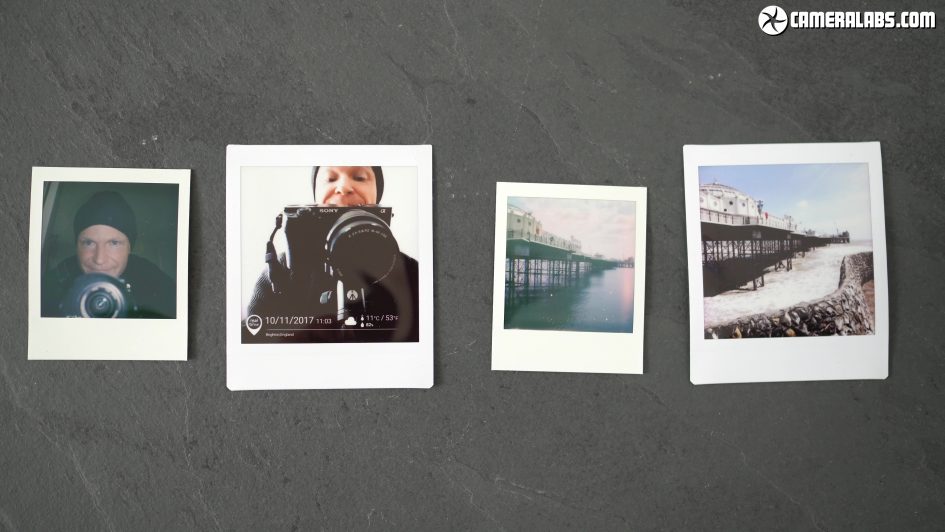
Above: I really like the INSTAX Square format, but again it’s a case of comparing the style of the cameras and the process itself.
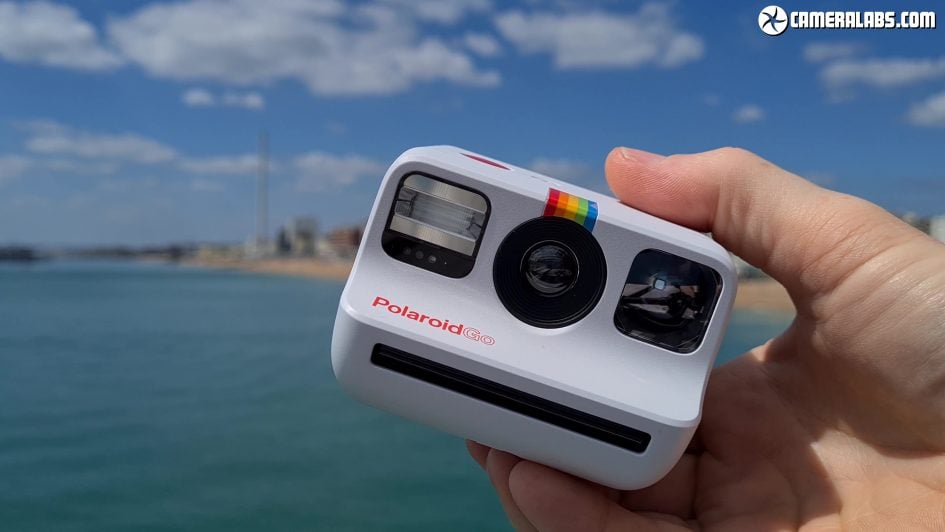
Above: In the end it’s a personal choice but I can tell you everyone who saw the Go loved the look of it and the cute factor is simply off the charts. I loved looking at it as much as I enjoyed using it and will definitely add one to my collection. Polaroid is a small operation but I think they’re doing a fantastic job.
Check prices at Amazon, B&H, Adorama, eBay or Wex. Alternatively get yourself a copy of my In Camera book, an official Cameralabs T-shirt or mug, or treat me to a coffee! Thanks!
 The Polaroid Go is the World’s smallest analogue instant camera and the cutest camera I’ve ever used. It uses new Polaroid Go film that produces tiny square prints in the classic Polaroid style. While the Go may cost roughly the same as a full-size Polaroid Now, there’s no denying the charm of this little device, and while the prints are obviously downsized, they’re also roughly half the price of I-type prints. INSTAX Mini is cheaper still though, with cameras starting at around two thirds the price. But the Polaroid Go is better featured than a Mini 9 or 11 and once you match its features in the INSTAX range the body price becomes similar. So while the Polaroid film remains more expensive, I feel the choice really boils down to which camera and process you prefer; do also compare the INSTAX Square cameras. In the end it’s a personal choice but I can tell you everyone who saw the Go loved the look of it and the cute factor is simply off the charts. I loved looking at it as much as I enjoyed using it and will definitely add one to my collection. Polaroid is a small operation but I think they’re doing a fantastic job.
The Polaroid Go is the World’s smallest analogue instant camera and the cutest camera I’ve ever used. It uses new Polaroid Go film that produces tiny square prints in the classic Polaroid style. While the Go may cost roughly the same as a full-size Polaroid Now, there’s no denying the charm of this little device, and while the prints are obviously downsized, they’re also roughly half the price of I-type prints. INSTAX Mini is cheaper still though, with cameras starting at around two thirds the price. But the Polaroid Go is better featured than a Mini 9 or 11 and once you match its features in the INSTAX range the body price becomes similar. So while the Polaroid film remains more expensive, I feel the choice really boils down to which camera and process you prefer; do also compare the INSTAX Square cameras. In the end it’s a personal choice but I can tell you everyone who saw the Go loved the look of it and the cute factor is simply off the charts. I loved looking at it as much as I enjoyed using it and will definitely add one to my collection. Polaroid is a small operation but I think they’re doing a fantastic job.



